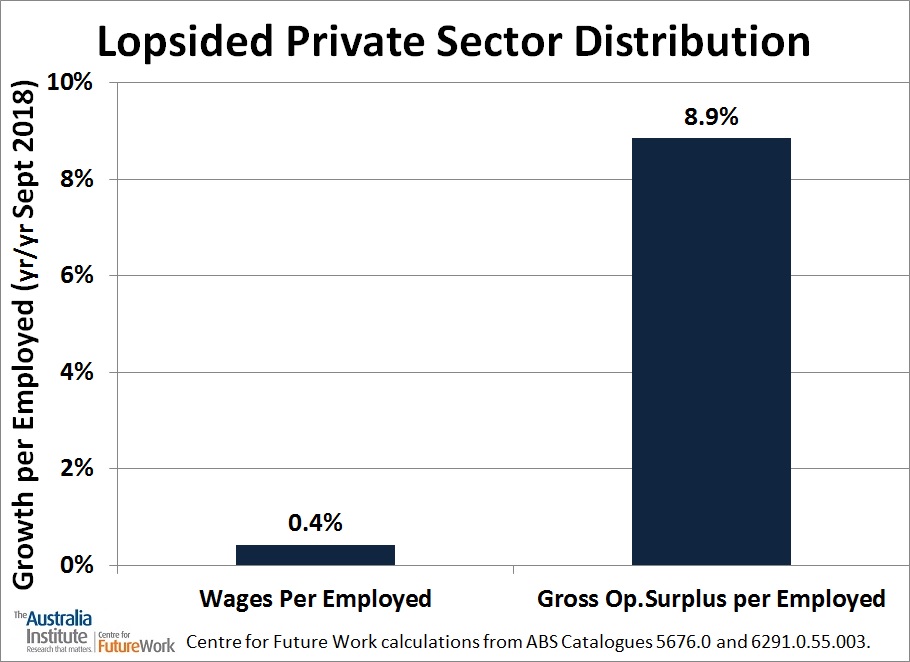Private Sector Wage Growth Still in Doldrums
New data on private-sector business conditions confirm that wage increases paid in the private sector of Australia’s economy continue to plumb record lows.
The ABS’s quarterly Business Indicators report, released yesterday, indicates total wages and salaries paid out by private businesses grew 4.3 percent in the September quarter, compared to year-earlier levels. This only slightly exceeded the increase in total private sector employment during the same period. As a result, wages and salaries paid per employed worker grew very slowly – by just 0.43 percent over the year.
A new briefing note prepared by Dr. Jim Stanford, Economist and Director of the Centre for Future Work, reviews the data on average wage and salary levels in the private sector. The 0.43 percent year-over-year increase implies a reduction in real wages for private sector workers (relative to consumer prices, which grew 1.9 percent over the same period) of about 1.5 percent.
Over the last three years, average annual growth in wages paid per employed private sector worker has fallen below 1 percent per year. Private sector wages are not only lagging behind consumer prices, they have also become de-linked from growth in real labour productivity (which continues to advance at about 1 percent per year).
The report also finds that business profits are constituting a growing share of total income in the private sector. In the September quarter, 75 cents of profits (gross operating surplus of businesses) were generated for private firms for every $1 paid in wages. That is the second-highest ratio of profits to wages since the ABS began collecting this data. The finding suggests that the labour share of total GDP will likely continue to decline in coming months.
In the year ending in the September 2018 quarter, business profits per worker grew by almost 9 percent – 20 times faster than wage payments per worker.
